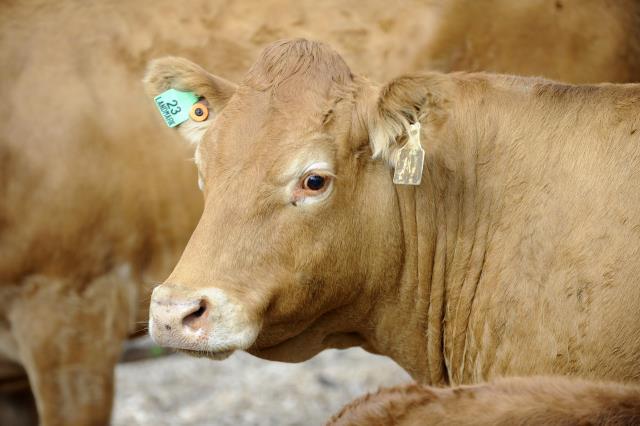Farmers in Gippsland are being advised to look out for signs of facial eczema in their livestock.
Senior Veterinary Officer Dianne Phillips said facial eczema is a seasonal disease that primarily affects sheep and cattle but can also affect alpacas and goats.
“Outbreaks occur in late summer and autumn and have previously been common in Gippsland.
“This season is shaping up to be a high risk for facial eczema outbreaks, with mild night-time temperatures – typically between 12 to 15 degrees Celsius – and high humidity,” Dr Phillips said.
Facial eczema is caused by a toxin called sporidesmin that is produced by a fungus that grows on decaying plant material. It primarily presents as photosensitization of the non-pigmented skin as a result of liver damage.
Dr Phillips said a number of animals are often affected at once and signs include dermatitis and peeling of affected skin, jaundice, depression, and death.
“Symptomatic treatment for photosensitization and liver disease may alleviate signs and if the initial liver damage is not advanced, then the liver can repair itself to varying degrees over time.”
A number of factors influence the toxicity of affected pastures including the concentration of spores on dead plant material.
Spores tend to accumulate in the highest concentrations on dead plant material at the base of the sward, so pasture height has an influence on the animal’s intake of spores.
Perennial ryegrass pastures are typically more commonly associated with outbreaks due to the amount of dead leaf litter this species produces, however, other pasture species are also susceptible to the fungus.
Dr Phillips said the amount of toxin ingested by an animal influences the severity of disease, but even animals without obvious photosensitization may still have significant liver damage.
“Prolonged exposure to smaller daily intakes of spores can be just as toxic as single large doses.
“Options for managing this risk revolve around monitoring weather temperatures, careful pasture and grazing management, and use of zinc in susceptible animals as a liver protectant.
“High spore counts indicate which pastures should be avoided for susceptible grazing animals and paddocks that are relatively safe.
“Zinc supplementation is a strategy that may be suitable for mitigating the risk of facial eczema, but it must be implemented prior to exposure to dangerous levels of spores,” she said.
In cattle a minor use permit is available for the application of a controlled release zinc bolus that is administered into the rumen. Enquiries should be made to your local veterinary clinic.
Alternative routes of zinc administration include via drinking water or incorporated into rations (pellets are recommended); however, formulations must be carefully calculated so consultation with your private vet and stock feed company or nutritionist is strongly recommended.
In sheep, adding zinc to a formulated ration or a reticulated water source is possible, but there may be issues with getting sheep to eat the required quantity when there is a surplus of green feed available in the paddocks and alternative sources of water.
Dr Phillips said Dairy Australia is planning to provide a spore monitoring service using sentinel farms across Gippsland risk areas.
Farmers can also collect their own pasture samples (following a specific protocol) and take them for laboratory analysis to a number of veterinary practices. Further information about this service is available on the GippsDairy website.
More detailed information about the disease, protocols for pasture sampling and locations of veterinary clinics that can conduct spore counts and the spore monitoring program are available on the Dairy Australia website.
Please contact your private vet or local Agriculture Victoria animal health team if you have more questions or need assistance.







